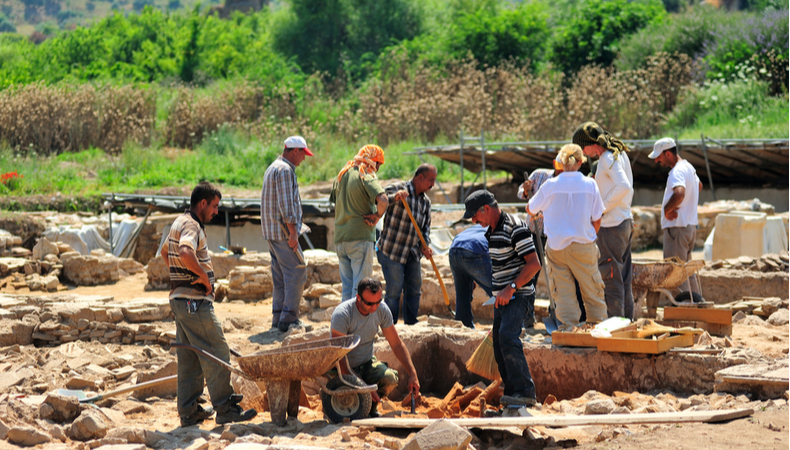Archaeologists’ discover mosaics in Turkey

The assembly of over 3,000 stones was unearthed in the remains of a 15th century BC Hittite temple, 700 years before the oldest known mosaics of ancient Greece.
It is being described as the “ancestor” of Mediterranean mosaics, which offers illuminating details into the daily lives of the mysterious Bronze Age Hittites. It is beautiful arrangement of 3,000 stones covered in beige, red and black, and arranged in triangles and curves.
Anacleto D’Agostino, who is the excavation director of Usakli Hoyuk in Turkey explains that is the ancestor of the classical period of mosaics that are obviously more sophisticated. This is a sort of first attempt to do it.
Previously, Turkish and Italian archaeologists painstakingly use shovels and brushes to learn more about the towns of the Hittites, one of the most powerful kingdoms in ancient Anatolia. However, now for the first time, people felt the necessity to produce some geometric patterns and to do something different from a simple pavement,” D’Agostino says. D’Agostino further added that maybe we are dealing with a genius? Maybe not. It was maybe a man who said ‘build me a floor’ and he decided to do something weird.
In keeping with a policy widely practised across the Assyrian Empire, these people may have been forcibly moved from their homeland and resettled in what is now south-east Turkey, where they would have been set to work building the new frontier city and farming its hinterland.
The evidence for the language they spoke comes from a single clay tablet, which was preserved after it was baked in a fire that destroyed the palace in Tušhan at some point around the end of the 8th century BCE.
It is believed that maybe priests were looking at the picture of Kerkenes mountain for some rituals and so on. Also, making it a golden week for all archaeologists, this week they also discovered ceramics and the remains of a palace, which supports and adds weights to the theory that Usakli Hoyuk could indeed be the lost city of Zippalanda.




